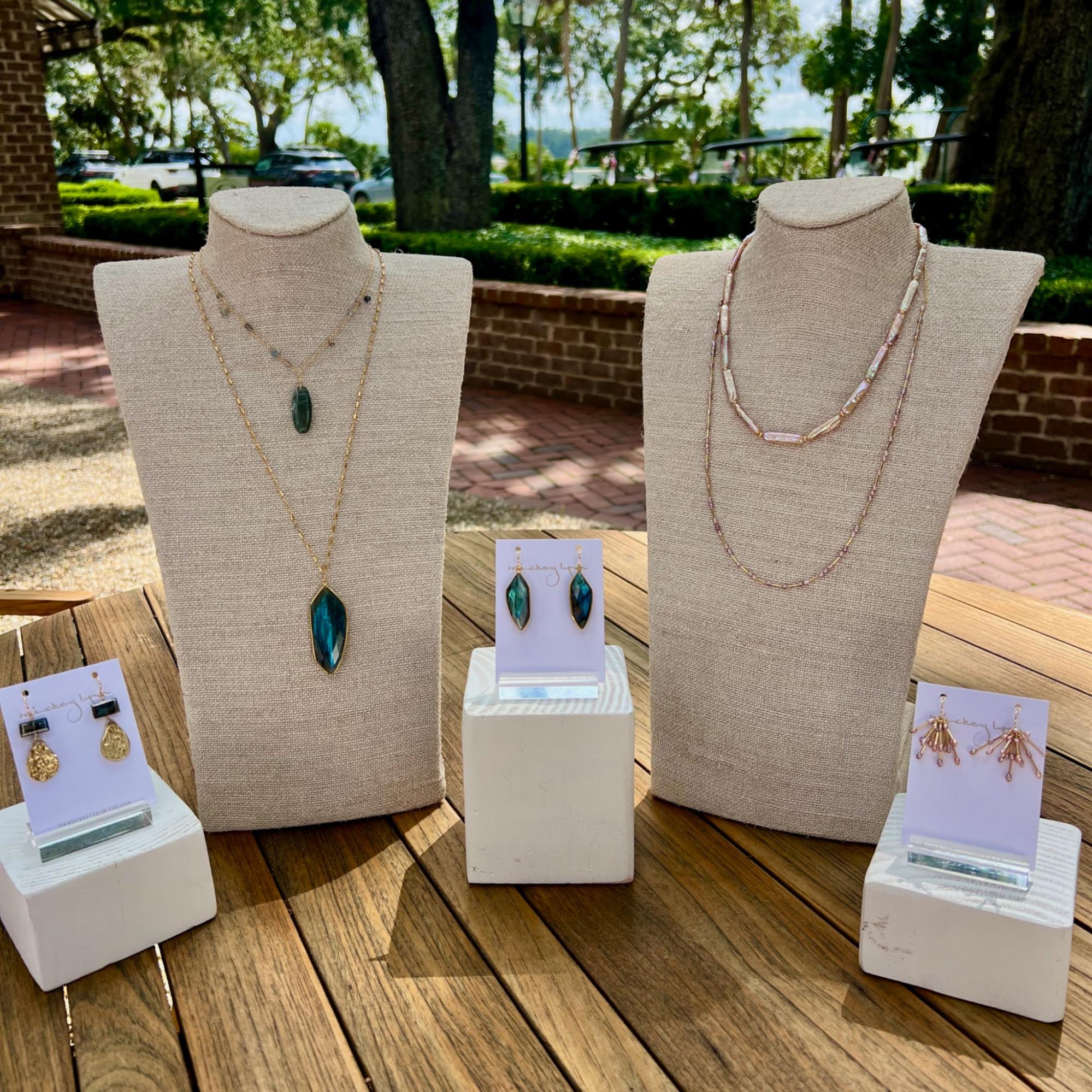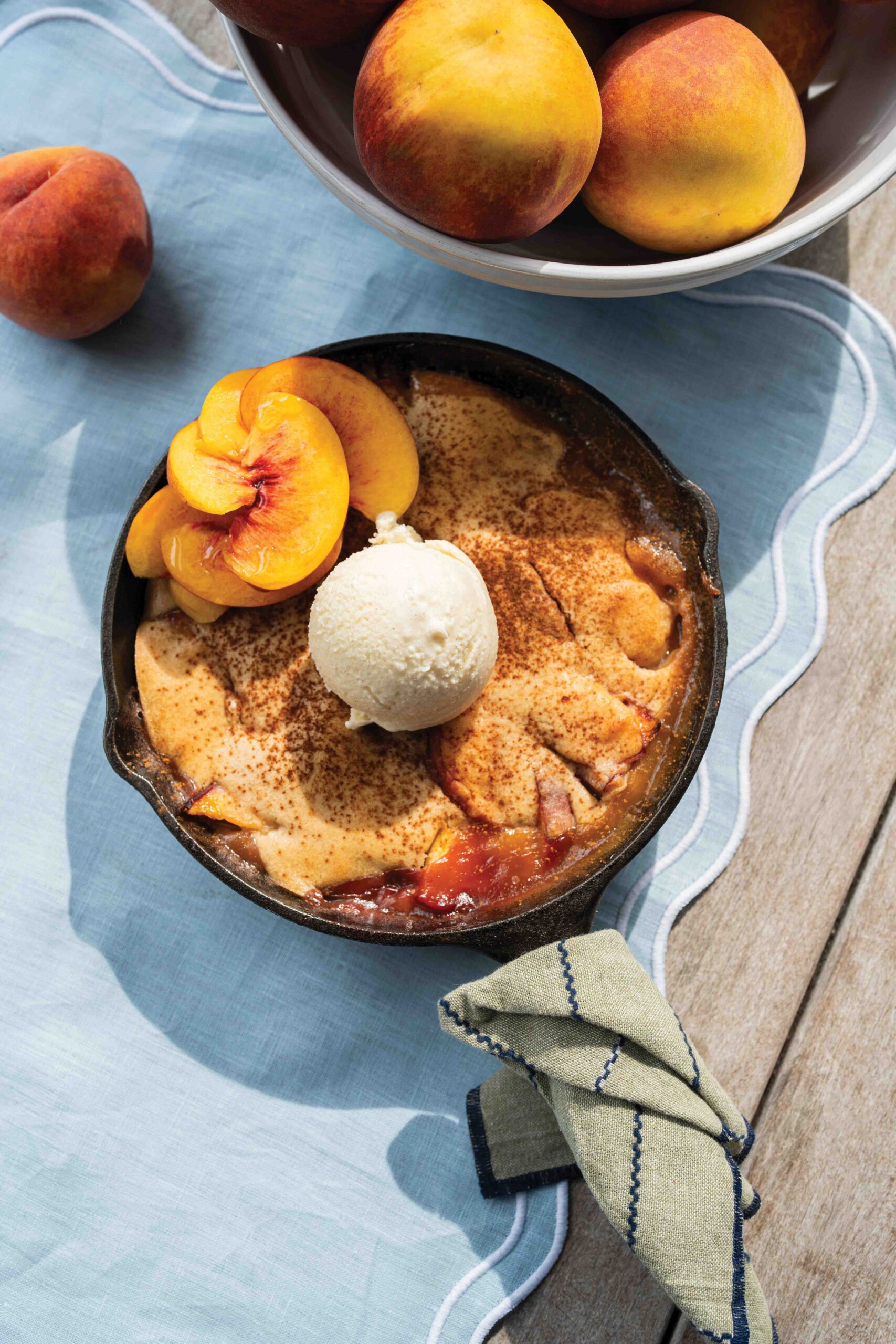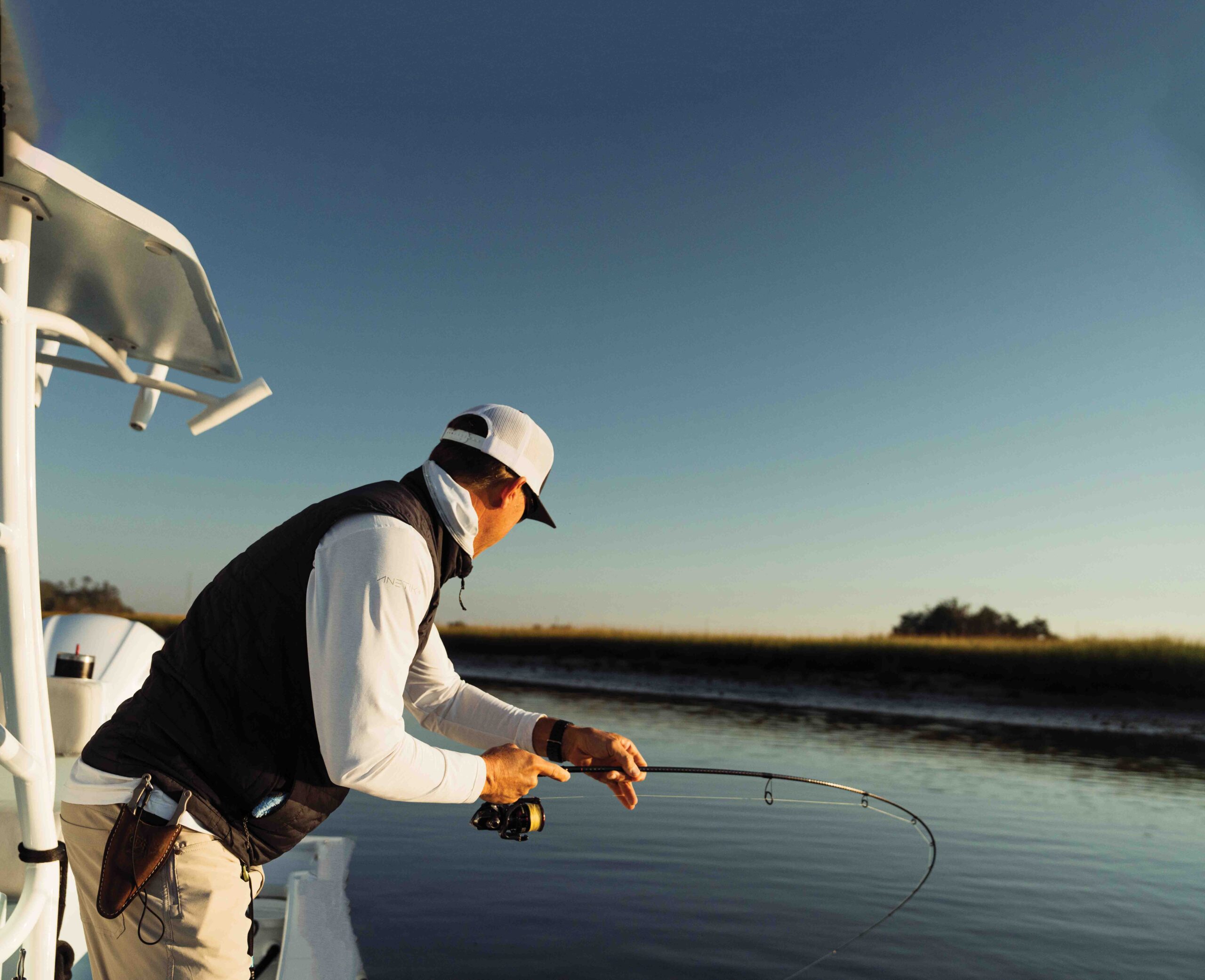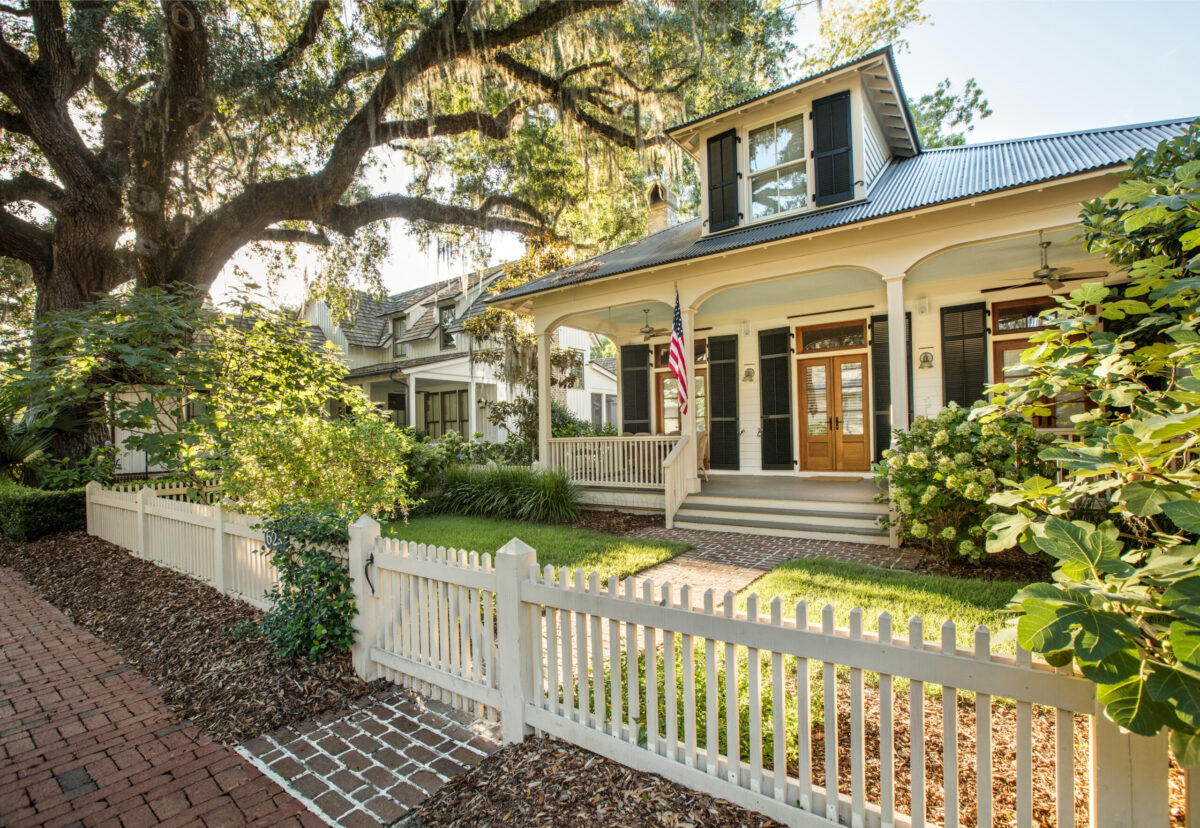Palmetto Bluff Real Estate Company Sales Office
Office Hours
Monday-Friday 9am - 5pm
Saturday 9am - 4pm
Sunday 12 - 4pm
Saturday 9am - 4pm
Sunday 12 - 4pm
Arguably, it’s the best time of year.
Flecks of green are beginning to peek through the stalks of gray spartina grass weathered by winter. Icy breezes off the May River soften their blow to a salty, balmy spray. Days are getting longer, tides are getting warmer, and local fauna are waking up from their wintry slumber.
Spring has sprung, but that’s just the beginning. It’s the dawn of another season too, one marked by crisp, refreshing sips from a glass of cold, barely blushing wine enjoyed on a porch somewhere, anywhere, so long as it is in the Lowcountry. It’s one of the most delicious seasons of them all. It’s the season of rosé.
Rosé wines have burst onto the scene in recent years as the drink of choice in spring and summer because their light, fresh, and fruity flavor profiles pair so well with warm weather. But as higher quality rosés have become more readily available stateside over the years, there are deeper, richer rosés that can stand up to colder temperatures in the winter months, too. Bottom line? Rosé is really great year-round.
Tracing its roots back to ancient Greece (and perhaps even further), rosé has been a part of wine’s history for quite a long time, but it is only in recent history that rosé has bloomed into the ubiquitous star of the weekend brunch scene that it is today. Most of the rosé that is served with your eggs Benedict hails from southern France in the Provence region, where the majority of wine production in the area is dedicated to making rosé. The warmer Mediterranean climate in Provence lends itself to easy rosé production, with the Côtes de Provence and the Coteaux d’Aix-en-Provence regions producing the most rosé-style wines.
Back in the US, rosé production has been slower and less significant until recent years. The first California rosé dates back to the late 1800s, but it wasn’t until the 1970s that rosé production ramped up, though under a different moniker: white zinfandel. White zinfandel was a happy accident created by Bob Trinchero of Sutter Home Winery in California. When producing his signature zinfandel, Trinchero came across one batch that got stuck in fermentation, which is when the wine does not completely convert from sugar to alcohol. The result was a wine slightly sweeter than most with a lower alcohol content, and it was an overnight success. As “white zin” was known for its sweet and fruity flavors (and even a headache), serious wine drinkers often overlooked rosé in favor of other stalwart California wines such as chardonnay and cabernet sauvignon.
Fast-forward to the present, and you’ll be hard-pressed to stroll into any wine shop worth its salt and not find a shelf of rosé bottles of varying degrees of pink to pick from. Because there are so many different types of rosé to taste—and tasting all of them at once is not recommended—we’ve enlisted the help of some of our favorite wine connoisseurs to help you navigate the rosé aisle.
(And if you want to try them all, who are we to judge.)
Alys Beach
Director of Food and Beverage
In your opinion, what makes a good rosé?
Location, location, location. Like any wine, better rosés are produced in certain regions and countries than others. Terroir-driven rosés are often created in wineries where winemaking techniques have been passed from generation to generation. Since rosé wines have become so popular, larger wine companies have begun to mass-produce rosé under a more generic label. Stay away from these wines. They are factory-made using a specific recipe to fake a flavor profile that pleases the palate of the masses versus the hard labor of true winemakers who combine their skills and what the earth and Mother Nature bring each year to make the most beautiful wines, true to their region.
What should people look for when buying rosé?
As with any wine, some grape varietals are better in certain regions, such as those grown in Provence, California, Northern Spain, or Oregon. I personally like to drink a wine that takes me to a specific place and reflects the true terroir of the region the wine came from. You should also examine the color of the wine—if you are looking for a lighter style of rosé, such as Provence-style wine, look for rosés of a light pale color. Darker rosés can have a richer mouthfeel and fruit profile.
You can also look at how much alcohol the wine contains when choosing your rosé. Anything above
11 percent alcohol by volume (ABV) will be drier in style, and anything with a low ABV will be sweeter. There are some exceptions, but you should drink rosé that is as fresh as possible, so look for a recent vintage.
What is your favorite varietal and brand of rosé right now and why?
This is a difficult question to answer as there are so many different styles and varietals for rosé wines. I, of course, drink more light rosés such as Provence-style Domaine Tempier rosé (Bandol, France), Sancerre rosé (Loire Valley, France), Château Musar (Ghazir, Lebanon), and Txakoli rosé (from Northern Spain) during the summer. But in the winter, I have a tendency to drink more Rhône rosé, such as Tavel (from Grenache grapes), or Antica Terra Angelicall pinot noir rosé.
Why do you think rosé is having a moment right now?
I think people finally realized rosé wines are not automatically white zin, and as people traveled more, they experienced fantastic rosés. I feel it started with rosé champagne becoming more popular over the past eight to 10 years, and then the Provence-style rosé became super popular. I think many people traveled to the south of France and enjoyed the rosés so much they started looking for it on restaurant wine lists and in wine stores, which changes the way people look at rosé.
What foods pair well with rosé?
I think what’s great about rosé is its versatility. Rosé can be the perfect wine for many occasions and go with so many different dishes from Provençal food, seafood, red meat, BBQ—even some Asian food. From a simple picnic with a French baguette, good butter, goat cheese, and charcuterie to a more sophisticated dinner with seared salmon, duck, or pork, rosé can stand on its own as the perfect pairing for a variety of dishes. With so many different styles, from dry and light to medium and fruity to a full-bodied dry rosé and even sparkling rosé, there is a rosé for every food, and not many other styles of wine can say that.
Montage Palmetto Bluff
Director of Wine
In your opinion, what makes a good rosé?
The production method and the grapes make a good rosé. For example, do the producers use grapes such as pinot noir, syrah, grenache, or mourvèdre? Is the production made with extended skin contact or Saignée production or are they adding red wine to white wine to make the rosé color? These are important elements of the winemaking process and largely impact the quality of the rosé.
What should people look for when buying rosé?
I always ask what styles they have enjoyed before to understand what they have tried and what they like. If they do not have an idea, then I steer them to classical regions where rosé is traditionally made to provide a baseline for them to know what they appreciate.
What is your favorite varietal and brand of rosé right now and why?
Remarkably, Azur Wines from Napa, California, produces about 750 cases of rosé each year—the backbone of their wine program, if you will. Many producers create a small production rosé using the French Saignée method, where they bleed off a certain percentage from the overall production. The Azur rosé follows the Méthode Provençale process (direct pressing or maceration and bleeding of the juice) along with a number of other steps similar to how wine is made in Côtes de Provence in France.
Why do you think rosé is having a moment right now?
I think it has always been there, to be honest. In California, it was not as apparent as it is here on the East Coast and specifically in the Southeast.
What foods pair well with rosé?
Try this Provençal recipe with eggplant and pair it with a bottle of Azur Wines. It is delicious and it will not disappoint.
This has a real southwest France provincial taste to it and works well with Azur Wines rosé, or any rosé for that matter.
Montage Palmetto Bluff
Beverage Manager
In your opinion, what makes a good rosé?
I always look for rosés from Côtes de Provence or Aix-de-Provence—those are the areas producing the best rosés out there in my opinion.
What should people look for when buying rosé?
I suggest sticking with rosés created in the south of France—they are dry, delicious rosés that are true to the region. If you want to get creative, you could try Wölffer Estate, which is located just north of Long Island, New York. The vineyard is absolutely gorgeous, and they do all of their rosés in a Provençal style. Also Domaine Serene has its R Rosé, which is an interesting rosé made out of Oregon.
Otherwise, I recommend staying away from rosés made in the US. They are often made with higher fruit content and are therefore sweeter. I prefer rosés focused on minerality and citrus and find those most often from the Provence region.
What is your favorite varietal and brand of rosé right now and why?
Everyone enjoys the big brands such as Whispering Angel and Miraval—those are the more mainstream ones. I really enjoy AIX rosé, and we sell it on property, too. It’s from Aix-de-Provence and is a really beautiful, easy-drinking wine.
Why do you think rosé is having a moment right now?
Rosé is so popular right now because it is an easy-drinking wine and very refreshing, plus who doesn’t love holding a glass of pink rosé? It’s great for the summer—sitting out on the beach or on the porch with friends, enjoying a glass of rosé. I also love opening up a large-format bottle of it to enjoy with a big group of friends.
What foods pair well with rosé?
I suggest pairing a good bottle of AIX with a fresh arugula salad with peaches, ricotta cheese, and a light lemon vinaigrette. Don’t pair it with steak—the wine can’t stand up to it, and I wouldn’t pair it with sweet items either. Try it with fatty foods so the acidity can counterbalance and cut through the fat of the food. It’s also great with fresh fish such as red fish or black drum.
Scarpetta Wine
Sales Manager
In your opinion, what makes a good rosé?
Rosé was created as a byproduct of red wine initially. It’s interesting to think about how you can make something out of a byproduct that would otherwise be thrown away. As with any other wine, a great rosé comes from a great producer. If you are walking into a wine store, look to a producer. Don’t just look to a label that appeals to you.
What should people look for when buying rosé?
If you are new to rosé, an easy way to find one that is right for your palate is to find a producer of red and white wines that you enjoy and buy their rosé. I also encourage wine drinkers to dig a little deeper as a consumer when buying wine and to care about where the wine comes from. Go to a local wine shop instead of a grocery store and ask the owner for their recommendations. You can tell them what you want, too—if you need something to go with lobster, they can make a good recommendation. They have curated their selection of wine on their own and personally tasted each bottle before deciding to carry it in their shop, so they will have a specific point of view to share.
What is your favorite varietal and brand of rosé right now and why?
I work for Scarpetta Wine, so I’ll give them a shameless plug. I love their Squadra Rosato—it’s a certified organic old vine wine made from nero d’Avola grapes, which are native to Sicily. The wine is Provençal in style and tastes like salted watermelon. It’s dry, with light, delicate, and salty fruit.
Why do you think rosé is having a moment right now?
Rosé has always been a thing. It’s been a long-standing tradition in Europe—we as Americans are becoming more Eurocentric and therefore have adopted many of their tastes.
It’s also having a moment because it is delicious and easy to understand. As it’s usually dry, rosé goes great with the weather—on a bright, sunny day, you usually want a glass of rosé. In the winter, you want a glass of rosé when you are out for lunch. Rosé is versatile and delicious, and who doesn’t like pink stuff?
What foods pair well with rosé?
Rosé is usually best paired with seafood-based dishes such as raw, broiled, or fried oysters; lobster; and shrimp. It’s also great with Asian flavors and things with a little spice—sushi, too. And when I have leftover rosé from the summer months, it goes great with turkey at Thanksgiving as well.
Failla Wines
Sales Director
In your opinion, what makes a good rosé?
Well for me, like any wine, it has to do with the grapes. And to get good grapes, you have to look at the site of the vineyard and the farming in that vineyard. Honest, organic farming is, in my eyes, the best approach.
For the style of rosé, my favorite is the whole cluster pressing of red grapes after maceration. Skin contact is the important factor here. When grapes are pressed, the juice is typically always light or clear in spite of the grape’s skin color. Wines get their color from the juice’s contact with the skin of the grapes. As the skins and the juice soak together, the color from the skin extracts into the juice. In time, this phenolic information is important in all skin contacted wines, as it impacts the tannins, color, and some of the mouthfeel-manipulating flavor compounds found in skins, stems, and seeds.
There are a few ways to make rosé wine. There’s Saignée, which is a process of extracting or bleeding off some juice to make a red wine fermentation more intense or have more tannin and color. The idea is there would be a ratio of less juice to more phenolic compound. The winemaker crushes the grapes, letting them sit in contact with the skins before separating (pressing or racking) the colored juice from the skins.
Then there is the blending technique, which is mostly frowned upon in the winemaking community. This approach involves blending white and red wine together to make pink or rosé wines.
My favorite approach is harvesting the grapes for the sole and initial purpose of making a rosé wine, then allowing some maceration of the juices, and finally pressing off the wine to ferment as a proper rosé. Also, my preference is that of a dry rosé, as I think there is more complexity in those wines.
What should people look for when buying rosé?
I’d recommend finding a small curated neighborhood store that really takes pride in its selections and gets to know its customers. Rosés vary in color. A properly made rosé that is darker in most cases will have more tannin, so darker rosés may have more body than lighter rosés. White wine drinkers may lean toward the pale rosé and a red wine drinker may prefer darker rosé.
But when it comes to what to look for, it is actually impossible, because you really need to taste the wine to gauge its dryness. In all hues of pink, sweetness can vary. Some bottles may be a tad sweet on the finish while others may be bracingly dry. As I stated previously, I prefer the dry rosés, so when I buy rosé, I look for the alcohol content, which is directly correlated to its sweetness (if, of course, the wine is not a manipulated or manufactured wine). In the end, it’s best to taste a variety of rosés and find what style of rosé you like best.
What is your favorite varietal and brand of rosé right now and why?
This is a tough question, but at the moment, it is cabernet franc. I have always had a connection to this varietal since making wine in New York. It has a vegetal aspect that I like and holds its acid when harvested early and lends itself well to a rosé style of winemaking. I also like grenache, which is found in the most famous rosé region of the world: Provence.
Why do you think rosé is having a moment right now?
This is an interesting question, as rosé was marketed for many years as such a strange product. There were so many bad rosés (also called white zinfandel or blush wines), and most of them were manufactured or made from a specific formula. I think when the consumer started actually getting good rosé wines the tides started turning. There are also more people making rosé, which helps the growth in the market.
Even though rosé is still marketed sometimes as a seasonal wine, I believe it is appropriate to drink rosé all year round. I imagine it was first marketed that way because of it being a young bright wine that is not aged very long, so after a winter of aging and fermentation, producers would market it for the warmer weather and get it out of the cellars and into the market sooner.
I think rosé is not a fashion moment but is here to stay.
What foods pair well with rosé?
An honest rosé is one of the most versatile of wines thanks to its acidity and tannin levels. Rosé’s acid helps balance the saltiness of seasoned food, and its sweetness helps extinguish the heat in spicy foods. And both can help balance food with acid and smoke. Obviously, the main factor to consider is whether the wine is sweet or dry. Drier rosés usually work best with lighter pairings, such as poultry, fish, vegetables, pizza, and salads. Sweeter rosés would work better with heavier pairings, such as charcuterie, roasts, and grilled meats.
%GALLERY%

Palmetto Bluff’s Moreland Village feels a world away from the more traditional architecture of the iconi...

We are thrilled to introduce the inaugural winners of the Inspiring the Arts Scholarship—three extraordinary young women pursuing their artistic dreams through higher education! Katherine Donahue has been named our first official scholarship recipient, wit...

From handmade jewelry to performance wear, the latest arrivals at Palmetto Bluff’s retail spots capture the season in true Lowcountry style. This summer, the Bluff’s shops are full of fresh finds, carefully chosen by our trusted retailers—including FLOW Galler...

Citizen Science is Thriving at Palmetto BluffDid you know that residents of Palmetto Bluff are playing a vital role in national and global conservation efforts—all from their backyard?Through the Palmetto Bluff Conservancy’s growing Citizen Science programs, c...

In October 2024, Grammy Award-winning musician Clay Ross visited Palmetto Bluff as part of The Arts Initiative's Artist in Residence Program. Through storytelling and song, he explores identity, heritage, and the universal language of sound. By Barry Kaufman ...

Palmetto Bluff Club Executive Chef Beth Cosgrove and Director of Culinary, Chef Rhy Waddington, Cook Up Four Peachy Recipes for a Summer in the South. Is there anything more iconic than a southern peach? A symbol of summer and Southern heritage, the peach car...

Following the tides and angling for redfish in Lowcountry creeks and estuaries with Captains Brian Vaughn and Will Stephens Story by Sandy Lang It is a sunny morning in October and the water is calm and glassy. The silence is punctuated by a gush of breath f...

7 Ways To Upkeep Your Palmetto Bluff Home As spring arrives in the Lowcountry, the change in season brings more than blooming marshlands and sun-drenched afternoons; it’s also a perfect time to refresh and care for your Palmetto Bluff home. Coastal living mea...

When the land speaks, you listen. And at Palmetto Bluff, it spoke to two of golf’s most legendary course designers—Bill Coore and Ben Crenshaw. We invite you to watch our newest video, shot this past winter and featuring Bill and Ben, along with South Street P...

5 Renovations to Increase the Value of Your Lowcountry Home Whether Palmetto Bluff is your full-time residence or a cherished retreat, deciding to sell is never a quick or casual choice. However, when the time does come, you want your home to be as market-rea...
Learn about the Palmetto Bluff Conservancy and how we keep the vision of our land in place.
On land or water, there is an ever-evolving variety of activities.
We do not attempt to independently verify the currency, completeness, accuracy or authenticity of the data contained herein. All area measurements and calculations are approximate and should be independently verified. Data may be subject to transcription and transmission errors. Accordingly, the data is provided on an “as is” “as available” basis only and may not reflect all real estate activity in the market”. © [2023] REsides, Inc. All rights reserved. Certain information contained herein is derived from information, which is the licensed property of, and copyrighted by, REsides, Inc.